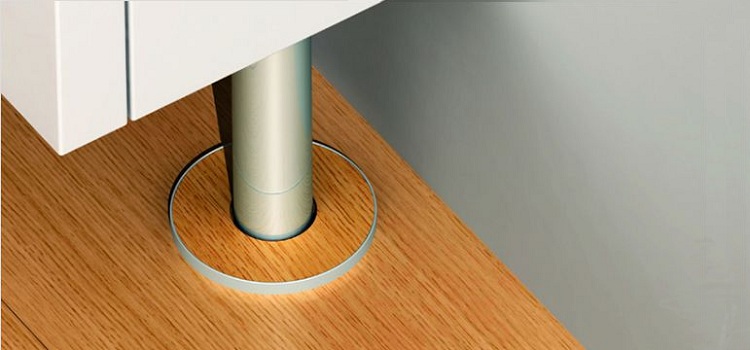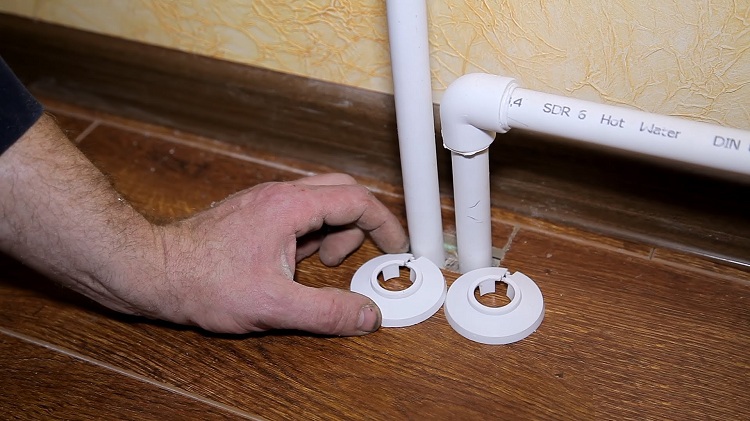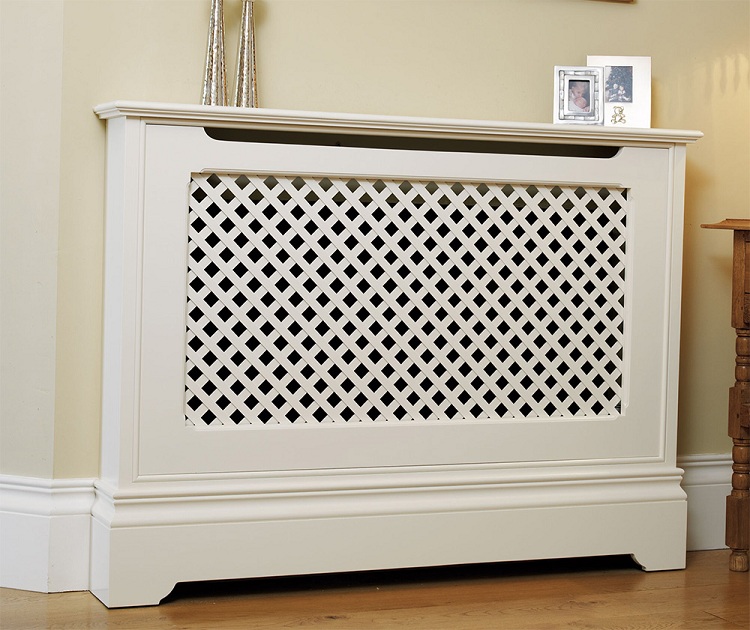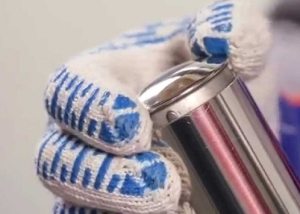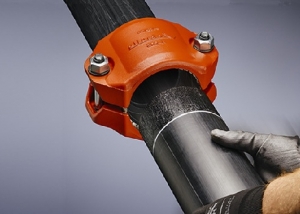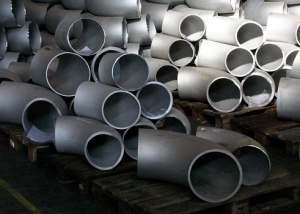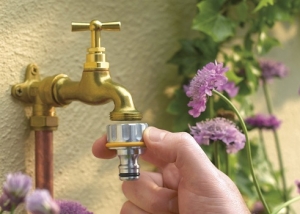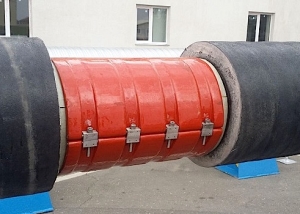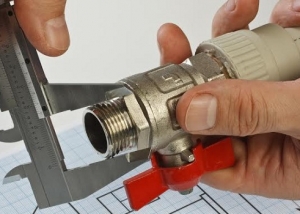Decorative pipe linings are parts that allow you to turn engineering communications elements that do not fit into the interior into an organic component of the overall design. For various reasons, you have to resort to decoration to hide protruding structures that violate the overall impression of the room, without interfering with their normal functioning.
Content
Appointment of overlays for pipes
Decorative details are used to hide inharmoniously protruding pipes and radiators of heating systems, decorate the bathroom, create a single design for the space. But the lining on the heating pipes allows us to solve not only the problem of how to decorate the pipe, but also to achieve other goals. Using a universal decorative lining on the heating pipe, it is possible:
- to ensure that the decorated structures are harmoniously combined with other elements of the interior of the room;
- mitigate the effects of hard thermal radiation and provide protection against burns, especially in cases where systems whose operation is associated with high temperatures are used. Very appropriate, from this point of view, for example, the decor of pipes in the bathroom;
- maintain the cleanliness and aesthetic appeal of shielded structures that are protected from dust and pollution. Appearance of radiators after decoration will remain longer in a natural state;
- installation of metal panels promotes uniform distribution of thermal radiation.
Note! Evenly warming up, the metal panel covering the heating radiator makes the air circulation more natural.
A decorative overlay, provided that it is used correctly, is capable of performing several functions that go far beyond a narrow aesthetic purpose.
Requirements for installing the decor of a metal pipe
When choosing a decorative cup for pipes or deciding to install rings, or a special metal shielding panel, you should have an objective idea of the main characteristics of the design. The functionality of the devices during decoration should not be affected.
Installed parts must:
- to have an aesthetic appeal corresponding to their main purpose;
- withstand exposure to a sufficiently high temperature, without losing shape and appearance and without emitting chemically active compounds;
- not to allow a decrease in the level of heat transfer. This happens quite often when boxes with plugs are installed;
- provide for the free circulation of air. Air vents serve this purpose;
- when installed in a bathroom where the humidity is high, made of materials with sufficient moisture resistance;
- increase the total volume of the heating pipe by more than 16 mm. Rational is the location of the decorative lining in five to seven millimeters from the pipe;
- securely attach without shifting as a result of accidental mechanical stress;
- to be strong;
- comply with fire safety requirements;
- easy to assemble and disassemble, providing unhindered access for preventive measures and repair work in relation to elements of the heating system;
- keep free access to shutoff valves and temperature regulators.
The installation of decorative linings should not cause the heating radiators and pipes to interfere with the normal functioning and maintenance of their work.
Attention! Decorative trim should not be a fire hazard.
Heating: how to decorate
To decorate the pipes in the toilet, you can use several ways:
- install false walls. Plasterboard panels are installed on a metal or rack frame, with which the pipeline is closed. For pipes in the toilet, in this case, an overhead decorative element will be needed to ensure air circulation. You can use simple ventilation grills;
- apply universal linings. To install a plastic box or decorative panel, you can use commercially available ready-made models or make your own construction. If necessary, a minor modernization, designed to hide irregularities, resort to the use of decorative bypass for heating pipes. Decorative rings for heating pipes were originally used for the sole purpose of covering an uneven undercut on a stretch ceiling. It turned out that the decorative bypass for pipes can be used in many other situations, due to the fact that it is easy to install, and the appearance is very attractive;
- a decorative coating can be created from heat-resistant fabric;
- the pipe is wrapped with a hemp or jute rope;
- A universal option for decorating pipes for all occasions is painting, which opens up considerable scope for the manifestation of imagination when combining colors and / or choosing a plot and color scheme for a picture.
To hide the radiator, which is a mandatory requirement for many public institutions, such as hospitals and schools, can be used:
- A metal panel for the manufacture of which galvanized or stainless steel is used. The panel is installed front or with side walls.
- Installation of a wooden decorative screen not in contact with the battery, or a designer decorative radiator.
Decorative pipe rings
Collapsible decorative rings for pipes are used in cases where it is desirable to mask the contact point between the pipe and the floor covering. Correct laying performance is associated with maintaining a 10 mm gap, due to which the narrowing / expansion of the material used as a floor covering is compensated. Therefore, the existence of a joint is inevitable; it will not be possible to hide it with a hole made. In such cases, they also recall decorative rings, which are distinguished by a simple design and ease of installation.
With the help of collapsible contours put on a girth on the pipe, the gaps are closed. Then it remains to slam the ring, firmly press it to the floor surface and consider the installation of the decorative masking element complete. Specialists recommend gluing the junction of the ring with the floor for greater reliability. The overlay can be removed if the need arises, and reinstalled in a new place.To do this, you will need to rinse it first.
Stroke for pipes is characterized by a variety of assortment:
- it can be selected for half-inch and three-quarter diameter products (these are the most popular sections), inch and inch and a quarter;
- it is made both from plastic or MDF (budget option), and from wood of different species - oak, beech, ash and others, as well as from bamboo;
- imitations in different styles allow you to combine rings with parquet, laminate, artificial stone and other types of coatings;
- An additional variety is created by the abundance of colors, shades and textures.
Decorative sockets for heating pipes or cups, as they are also called rings, are distinguished by a whole bunch of wonderful qualities that contribute to the spread of their use:
- extraordinary ease of installation. A collapsible socket for pipes is put on in a girth, latched (if the diameter of the sockets is correctly selected), pressed to the surface of the coating - it is unlikely that the process will take more than one minute;
- universality of use. Cups can be used with any type of flooring;
- decorative cup is inexpensive;
- the ring can be easily selected not only in diameter, but also in color, shade, texture that mimics the surface of different types of tree species;
- aesthetic appeal, which, in general, is the main factor in creating the design of the premises.
Note! The disadvantages of decorative rings, as a rule, include insufficient strength, as a result of which, with prolonged use, the products begin to crack. But it is unlikely that such a drawback should be considered somehow significant, because we are talking about a small, easily replaceable part.
The use of various kinds of decorative pads on the elements of the heating system is becoming more widespread. This phenomenon is based not so much on blindly following fashion trends as on the high additional functionality of the products, combined with aesthetic appeal and fulfillment of the main purpose - to hide unattractive designs. Practicality and beauty are the main advantages of decorative linings for heating pipes, contributing to consumer demand.
